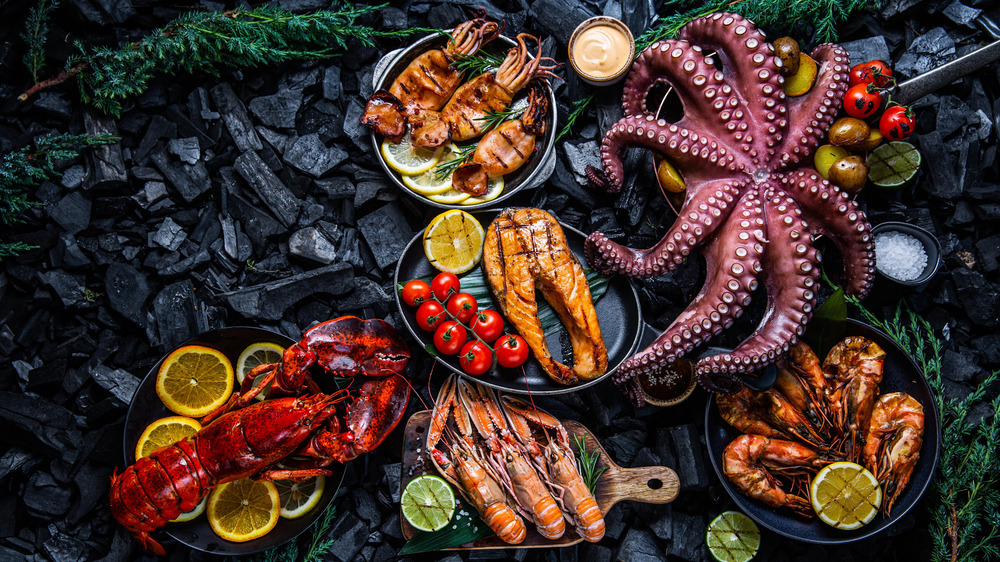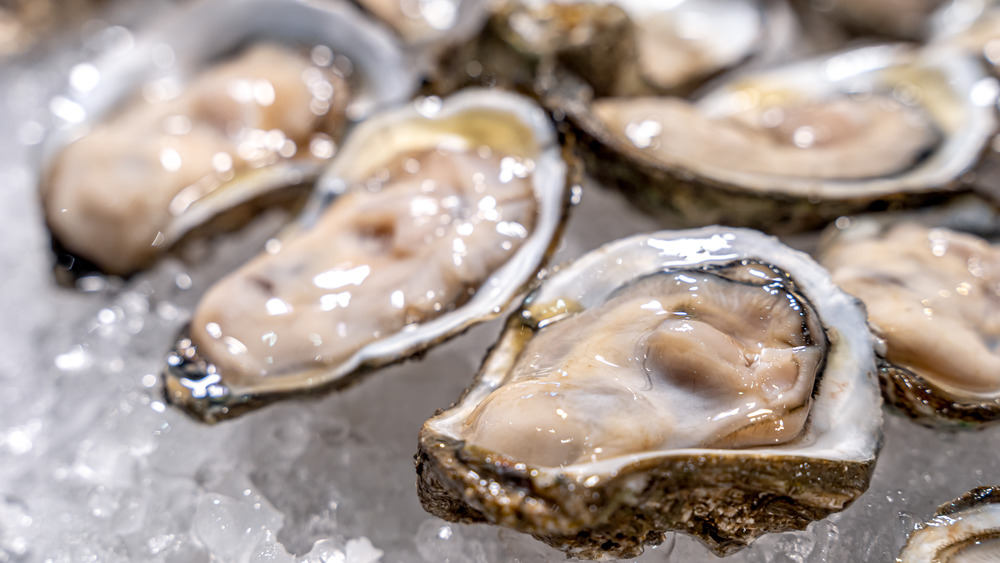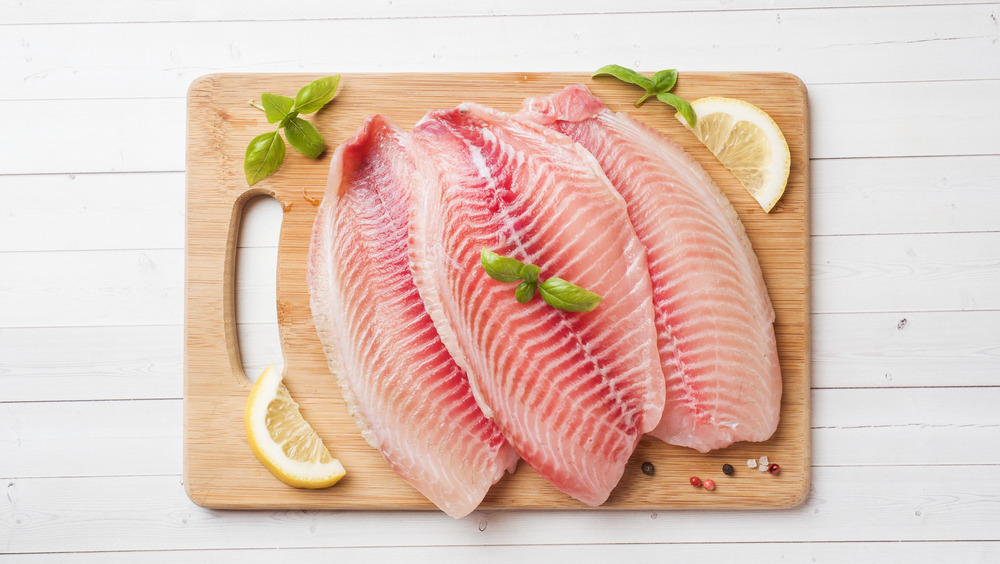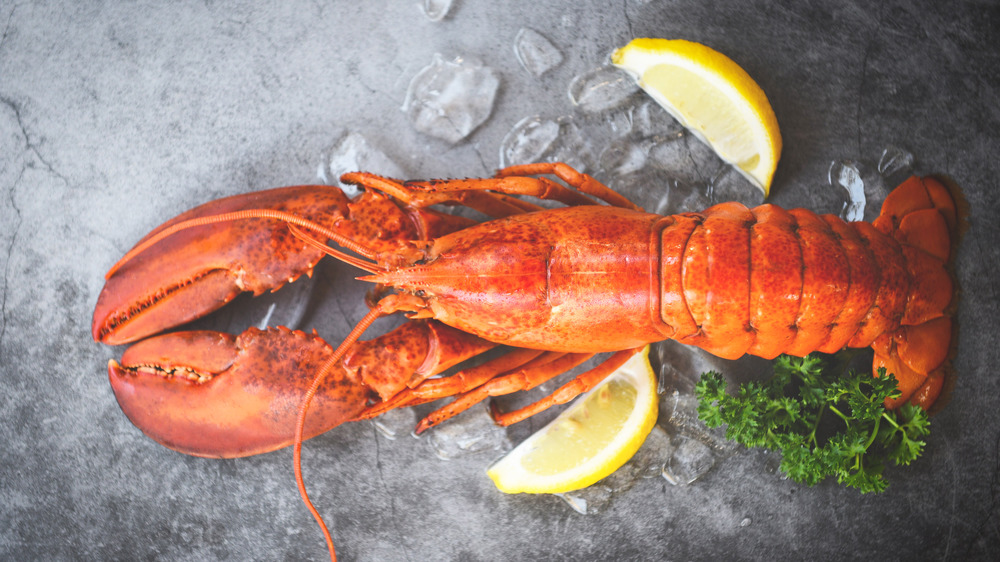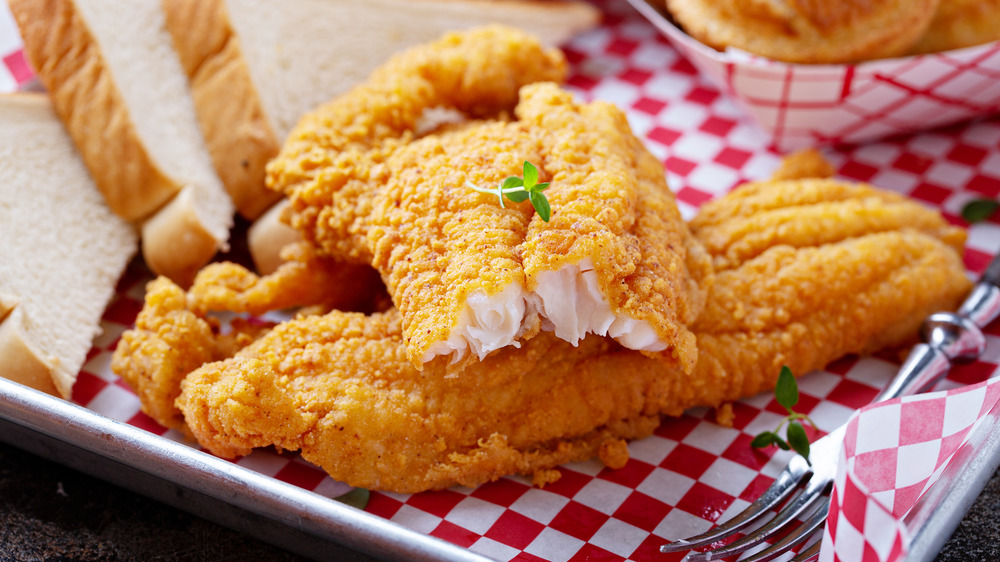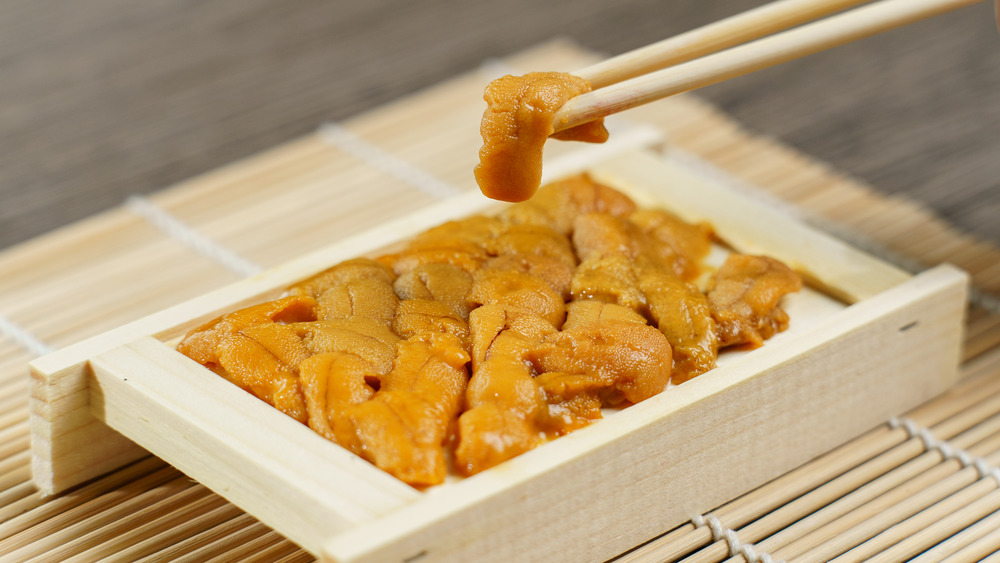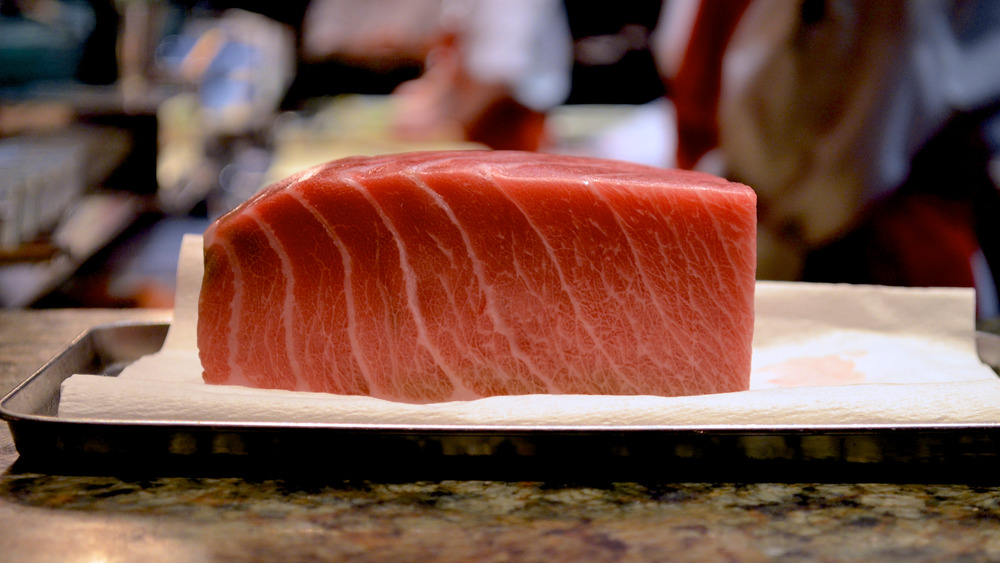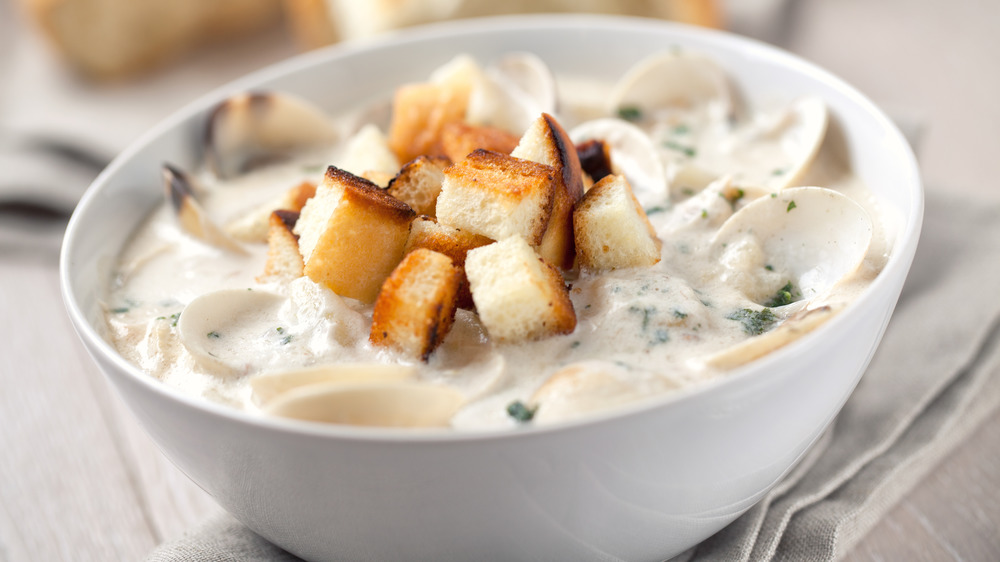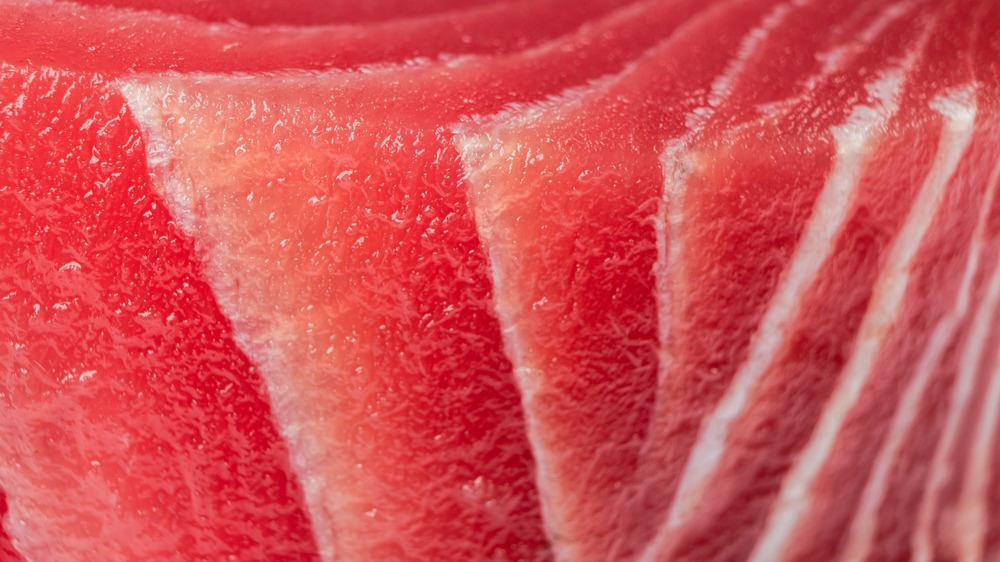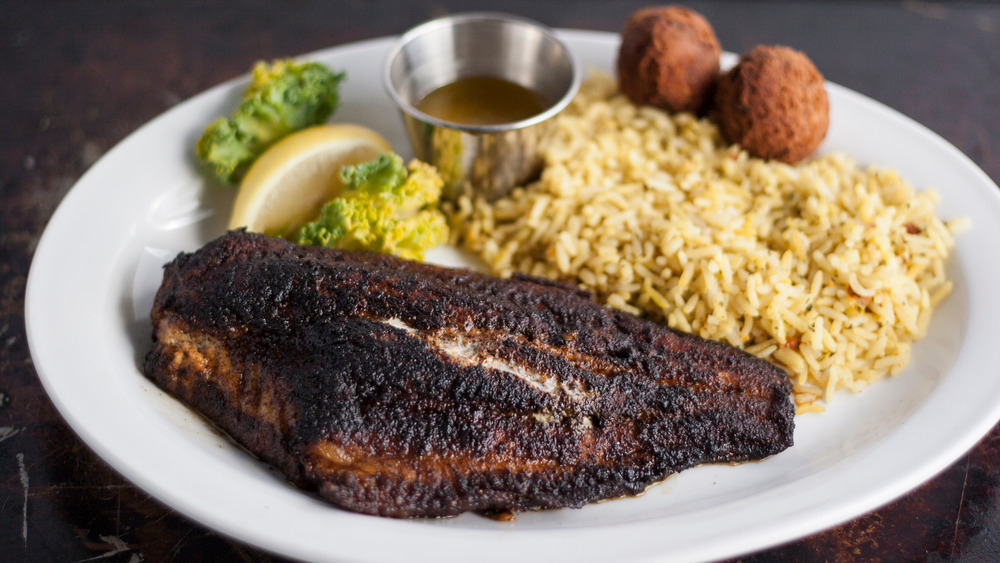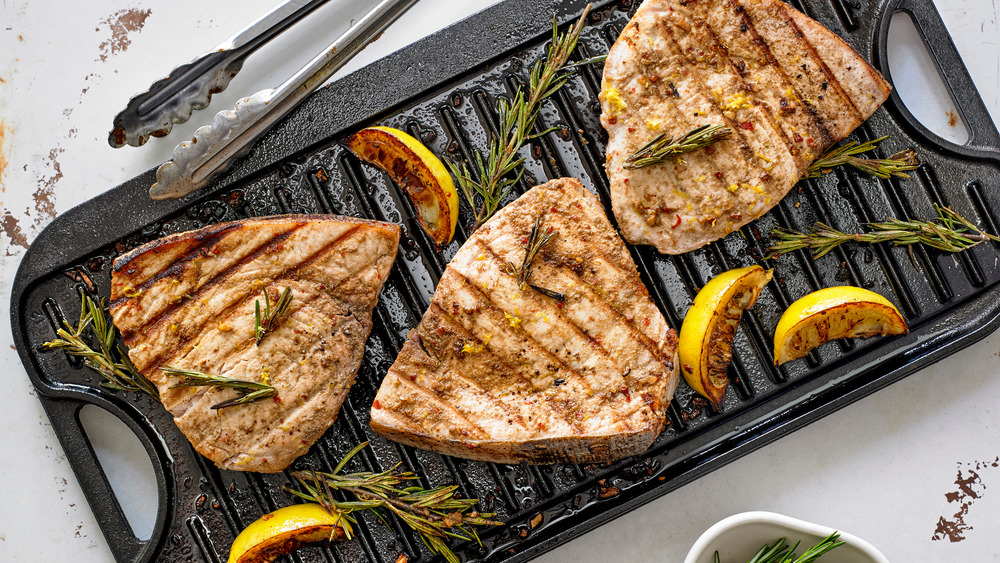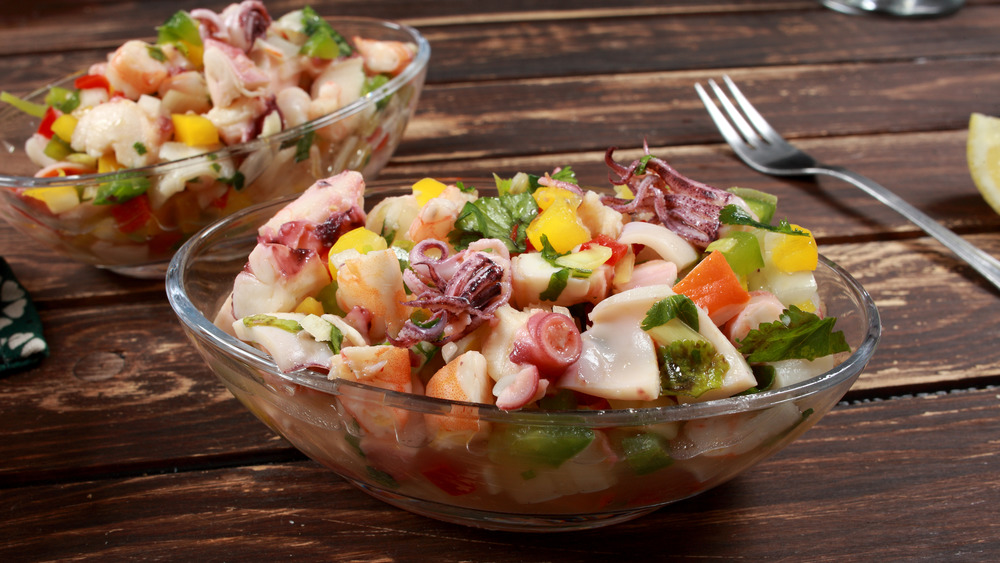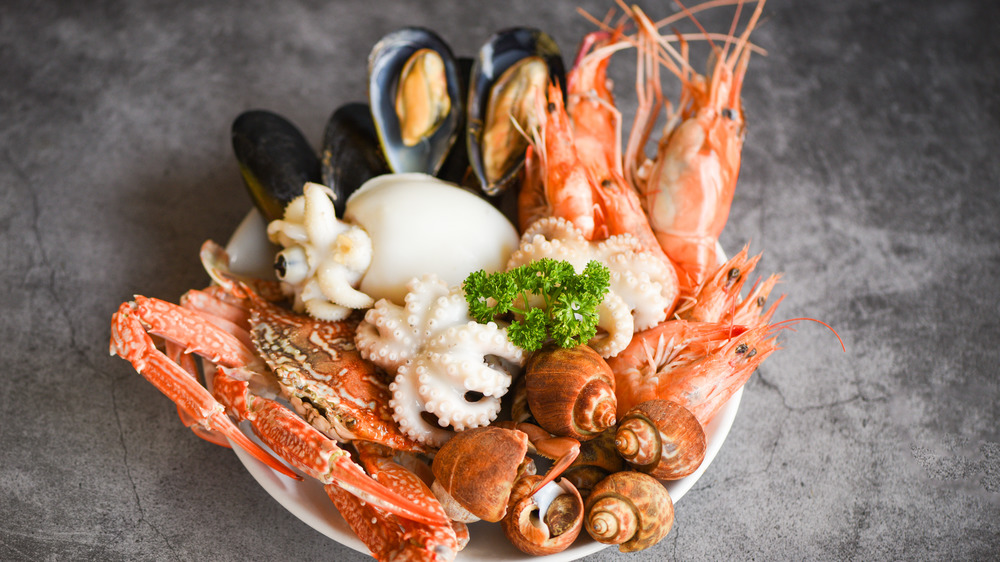6 Things To Order At A Seafood Restaurant And 6 Things To Skip
Seafood is one of those types of food that's pretty polarizing. If you hate it, you probably really hate it, and you likely don't want to come anywhere near it. To be fair, fish can be kind of stinky, so it totally makes sense if you fall into this category. But here at Mashed, we love a good seafood restaurant. For those who love seafood, going to a superb seafood restaurant is one of the true joys of life. It's usually somewhere on the coast with the freshest of catches, and you might even be able to smell the ocean from where you sit.
However, not everything you order at a seafood restaurant is going to taste amazing. In fact, there are some items you'll probably want to pass up completely. On a different note, there are other items that you definitely should order when you visit a seafood restaurant. Knowing which is which will ensure that you have the best possible experience the next time you go out to eat.
Wondering what to order and what to avoid? Check out six things you absolutely should order and six things you'd be better off skipping. Then, head to your favorite local seafood spot and get ready to chow down. You're in for a serious treat.
Order: From the raw bar
There are usually two concerns when it comes to picking out what you want to eat: taste and how healthy an item is. If you're concerned about either, you can't go wrong with ordering from the raw bar. This includes items like shrimp cocktail, oysters, or clams. And you know that seafood tower that comes out decked in a ton of ice and fish? That's usually a good option too.
According to Everyday Health, most of these kinds of items are great when it comes to the health factor. Since they haven't been breaded or fried, you're not getting a ton of extra fat or carbs. And when it comes to taste, you really can't beat the raw bar if you love the taste of seafood.
Into the idea of eating raw but don't really want to slurp down an oyster? Clams might be less intimidating if you're still new to the world of seafood. Sushi is an obvious one, of course, and it's something that you can find just about anywhere.
Some are concerned about the health risks of eating raw seafood, which is completely valid. For some, the risks are quite minimal, which means you should dig in if you feel so inclined. But if you have health problems that could make eating raw seafood an issue, speak with your doctor first. If you're still worried, there are some alternatives to raw oysters that you can still enjoy.
Skip: Tilapia
Not all fish is created (or farmed) equally, and not all of it is worth your time or money to buy at a seafood restaurant. Most of the time, tilapia fits into that category. That's because, according to Insider, fish like tilapia and catfish are more likely to be farm-raised instead of caught in the wild. Why is that a problem? Because fish raised in these conditions are often treated with antibiotics and other chemicals that fish caught in the wild aren't exposed to. Because of this, farmed fish are more likely to contain trace pollutants than wild fish as well. A study in Ecotoxicology and Environmental Safety indicates that levels of lead can be especially high in farmed fish. If you eat a lot of this type of fish, it could potentially cause health problems, which is the last thing you want from any meal.
The degradation of our oceans is a huge problem that is having serious consequences on the food we eat, so if you can, it's best to support fisheries that don't use these harmful practices. Because of that, you may want to skip out on the tilapia and try something else on the menu instead.
Order: Maine lobster
Sure, you may have had plenty of lobster before, but there's a good chance that you've never had Maine lobster, especially if you're not on the East Coast. It just so happens that most of the lobster you will find at the grocery store is actually from Canada. Canadian lobster isn't bad, but it can't match up to the deliciousness that is real Maine lobster. That's because the particular environment in this part of the ocean is perfect for producing sweet, succulent lobsters that are just begging to be dipped in butter or slathered in mayo and lemon (or whatever else you want to do with a lobster).
Obviously, the best place to grab a Maine lobster is ... in Maine. You can also find this kind of lobster at restaurants all up the East Coast, though if you're in doubt about what kind of lobster you're getting, you should always ask the waitstaff what, exactly, you're getting yourself into. Otherwise, it may be a little bit harder to find a Maine lobster, but keep your eyes open. If worst comes to worst, you'll just have to take a little road trip to New England so you can try it for yourself.
Skip: Catfish
You may love some food fried catfish, but if you're going to listen to our advice on skipping the tilapia, you might as well skip the catfish as well. Unfortunately, it's probably going to be difficult to find the all-natural catfish you may be imagining when you head to your local seafood restaurant. Since most catfish are farm-raised, according to Insider, there's a high chance that you're going to get a fish that's been exposed to antibiotics and chemicals to keep it viable in less-than-ideal conditions. And when you're paying money to get fresh seafood, that's probably not what you're going for.
By avoiding catfish and other farm-raised fish, you aren't just saving yourself money you could spend on better seafood, you're also voting with your dollar. Letting businesses know that you'll pay slightly more to get seafood that's been raised sustainably can help change the seafood industry to become more eco-friendly in the future. We all want our children and grandchildren to enjoy seafood just as much as we do, so this is an important issue you should think about the next time you order from your favorite seafood restaurant.
Order: Uni
This one is for those who are a little bit more adventurous, and it's not going to be something that everyone enjoys. But take it as a sign that Anthony Bourdain once said this when he was asked if he had any dating advice for single guys: "Put it this way, first or second date I would always take a woman to a really good sushi bar and I would order uni, and if she didn't eat the uni, that relationship was pretty much over. If she's immune to the charms of sea urchin roe or unwilling to try it, there's no hope." That may not be a good gauge for everyone on a first date, but we can see why it worked for Bourdain.
Let's just get it out of the way: uni is sea urchin roe, or the reproductive organ of a sea urchin. Sound weird? Caviar isn't too far off! This stuff seriously is a delicacy, though, so if you have a chance to try it, you certainly shouldn't pass it up. It's deliciously creamy and tastes like it came straight from the sea. Apparently, it's also known as an aphrodisiac, according to Food and Wine, so maybe Bourdain was onto something after all.
Skip: Bluefin tuna
When you're at a Japanese restaurant and you're looking at the menu, you might be immediately drawn to the bluefin tuna. It is known as being downright delicious, after all, and you probably wouldn't mind trying it. However, if you're trying to make the most sustainable choice possible, then opting for the bluefin tuna really isn't a good idea.
Duncan Berry is the cofounder of Fishpeople, and he spoke to The Healthy about why people should avoid buying bluefin tuna at both restaurants and grocery stores alike. He said, "Bluefin have become very overfished, and so we need to give this species time to recuperate." Basically, we are fishing these animals faster than they can reproduce, which could eventually lead to a complete collapse of the species. If you love eating tuna, that's the last thing you want.
But don't worry — you don't have to give up on tuna entirely. Instead, there are other varieties that may be better for you and for the environment. Albacore tuna belly has a similarly delicious flavor but is generally produced much more sustainably. Look for that the next time you venture to a seafood restaurant near you.
Order: Clam chowder
If you are on the lookout for a healthier choice when you go to a seafood restaurant, then you might look to the section of the menu that features soups and salads. That would actually be a smart move, especially if you were to end up ordering the clam chowder. This is one of the better choices out there when it comes to seafood appetizers. They said, "Contrary to popular belief, most restaurants make chowder with milk and flour, not cream. (Confirm that with your server.)" Good to know if you want something on the lighter side.
Plus, if you've never had good clam chowder, you need to get your hands on one -– stat. A bowl of this stuff will warm you up right away but won't make you too full for your meal. Of course, New England clam chowder is known as the best of the best, so try it out if you ever find yourself in the area.
Skip: Yellowfin tuna
It's unfortunate that you can't just order any kind of seafood without thinking about where it's sourced from first. But these days, many types of fish are exposed to all types of pollutants. For example, if you eat a lot of fish, you can put yourself at risk of mercury poisoning, Healthline reports, which can have serious health consequences like issues with motor control and changes to your vision. Because of that, it pays to think about where your fish is actually coming from.
If you see "yellowfin tuna" being advertised on a menu, you might want to look the other way. That's because, according to The Healthy, yellowfin tuna that had been caught near more populated parts of the U.S. were carrying 36 times the pollutants found in the same kind of fish that were farmed in more remote areas. Perhaps if you're ordering off a menu in Europe or Japan, you don't have to worry as much about these contaminants. But in the U.S., it may be worth your time to skip over this kind of tuna and search for something different. If you can find out where your fish came from, look for yellowfin tuna that was farmed in the West Pacific Ocean, which should be freer of nasty stuff.
Order: Blackened or grilled fish
Another healthy option that you may want to consider the next time you order from a seafood restaurant? Blackened or grilled fish. Oftentimes, what we think of as "healthy" fish is rather bland and tasteless: Imagine baked salmon with a squeeze of lemon on top. Sure, it tastes good, but it's not actually what you would think of as "indulgent." However, you can order your fish the healthy way without sacrificing any of that flavor you love.
This is when it's time to order blackened or grilled fish. Being in the grill gives fish a smoky flavor that you won't get when you order a baked fish. But if you really want to take the flavor to the next level, order your fish blackened. If you get a whole fish, this will leave the outside skin nice and crispy, which is an absolute joy to bite into. This method of cooking is still a really healthy option because blackened fish are rarely cooked with much, or any, oil at all. Healthy and flavorful all at once? Sounds like a great option to us.
Skip: Swordfish
Mercury is a real concern when it comes to eating fish, as Harvard Medical School reports. Most of the time, an occasional serving of fish won't hurt you, but if you're eating a lot of it, are pregnant, or are feeding young children fish, you'll want to be careful not to overdo it. And if you're digging into seafood on a regular basis, then swordfish may not be the best option for you. That's because this type of fish is on the larger side, and larger fish are likely to hold higher concentrations of mercury simply because they eat lots of smaller fish that also carry mercury, as per The Healthy. Swordfish every now and then may not be a huge problem, but you certainly won't want to order it on the regular.
If you're looking for a more sustainable choice that won't have you as worried about the mercury situation, you can stick to smaller fish, such as trout, sardines, and sole. The Healthy says that these fish typically have the lowest levels of mercury compared to other, larger types of fish out there, so they're usually a good bet when it comes to this issue.
Order: Crudo
Those who truly love seafood know that one of the greatest pleasures of this kind of food is crudo. Yes, you do have to get over your fear of raw fish to dig into this kind of stuff, but once you do, you're going to see why it's such a popular option at some of the best restaurants in the world. "Crudo" means "raw," so when you see something called crudo on a menu, expect raw fish to come out to your table. Tuna tartare is a common crudo dish you'll often see, and you simply have to try it. Raw tuna melts in your mouth, and it's often combined with delicious herbs and spices.
Another type of crudo that's popular in Latin America is ceviche. Ceviche is white fish that's traditionally marinated in lime juice with chiles, onions, and often sweet potato, although you can find a ton of different variations on this recipe out there. You may also run across salmon tartare in your restaurant travels as well.
Luckily for all those who love raw fish, Eat This, Not That! has declared crudo to be a healthy choice when you're ordering from a seafood restaurant. We love it when eating healthy aligns with eating tasty.
Skip: The seafood special
If you're out at a restaurant that serves seafood but isn't a seafood restaurant, per se, there's a good chance that you'll want to avoid the "seafood special." That's doubly true if you're visiting on a Monday. Why? Well, the catch may not be so fresh, unfortunately. As chef Silvia Barban told Insider, "Specials are tricky in restaurants. It could be the most fresh and delicious special, but in some restaurants, specials are the way to clean up the fridge." On Mondays, the restaurant may be trying to make room for the fresh stuff in the next week, so you may end up getting all the not-so-fresh fish that wasn't served up over the weekend.
When it comes to seafood, you're probably looking for that freshness, so the seafood special may not be the best choice, depending on the day of the week you're dining out. That being said, if you're at a good seafood restaurant, they're probably not going to serve you something as a special unless it really is one of the best options available. If that's the case, feel free to order whatever the chef suggests — you probably won't be disappointed you did.
At the end of the day, if you are going out specifically for seafood, it does make more sense to go out to a restaurant that specializes in it instead of somewhere like a steakhouse that adds it to their menu as an afterthought.
